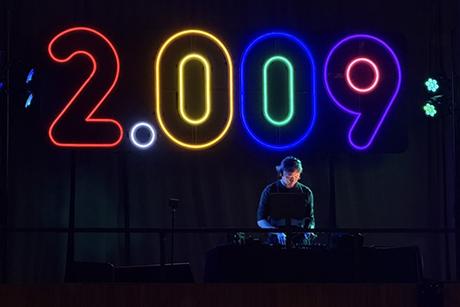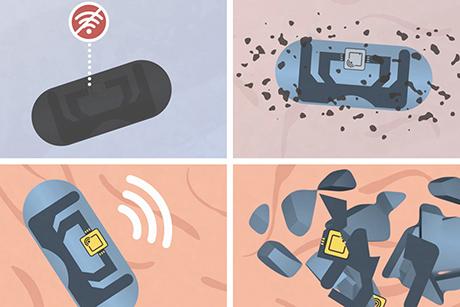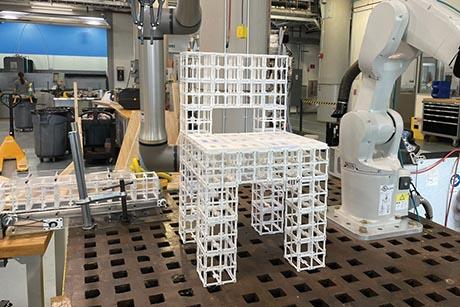Just what the doctor ordered
Dr. Matt Bianchi had a problem. As chief of the Division of Sleep Medicine at Massachusetts General Hospital, he needed a better way to diagnose sleep disorders. Typically, a patient seeking a diagnosis needs to come into a sleep lab and be attached to a number of devices. This setting is hardly representative of the patient’s normal sleep environment. Bianchi needed a way to track and measure sleep at a patient’s home.
Bianchi outlined this problem in a recent presentation to the students of 2.75 (Medical Device Design). The class brings clinicians from Boston-area hospitals and MIT students together to design prototype devices that help solve problems identified in the clinic.
“We use the design of medical devices as a vehicle to teach a deterministic design process,” says course instructor and Walter M. May and A. Hazel May Professor Alexander Slocum.
Medical devices offer students an opportunity to work on something they can personally relate to since at some point in their lives, either they or a loved one has needed to use one. “The more we can do to make medical devices simpler, lower cost, and better performing, the more we help not only the world, but ourselves,” Slocum explains.
Before the course begins in the fall semester, Slocum and his teaching team review submissions from local physicians — as well as some researchers and industry partners — who propose a problem for a team of students to work on. These physicians, such as Bianchi, then present to all the students in the class, who choose the project that most appeals to them. With the physicians paired with a group of eager students, the design process can begin.
“We coach students to say to physicians, ‘Look, we are going to learn from your clinical skills and we want you to learn from our engineering skills,’” adds Nevan Hanumara, research scientist in the Department of Mechanical Engineering, program manager at the MIT Tata Center for Technology and Design, and co-instructor of the class. “When the partnership works it’s beautiful.”
The projects physicians have worked on with students throughout the years have been incredibly diverse. One team worked with a clinician who was at the finish line of the 2013 Boston Marathon bombings and witnessed the need for a better tourniquet that could be applied quickly by first responders or even self-administered by an injured individual, such as a soldier on the battlefield. Another team had a more electrical focus, developing a wearable device that measured blood pressure continuously.
The expertise of the students working on these projects is as diverse as the devices themselves. “A key element in this class is we have students from very different backgrounds — mechanical, electrical, health sciences,” Slocum says.
Jonathan Miller, a graduate student in integrated design and management, experienced this diversity of backgrounds firsthand this past semester. His team also included two mechanical engineering undergraduates, an electrical engineering undergraduate, and a graduate student in the Harvard-MIT Division of Health Sciences and Technology (HST) program. The team worked together on developing a device that can enable more patients to receive dialysis at home rather than at a clinic.
“It’s pretty remarkable that you can take five students with very different backgrounds who weren’t previously exposed to the complexities of dialysis and pair them with the right kind of mentorship so we can develop useful solutions for people undergoing treatment,” Miller says.
Mentorship and guidance extends beyond device design and the end of the course. “We also focus on professional development skills, including the softer skills of team dynamics, working with vendors, and time management,” Hanumara adds.
HST graduate student Benjamin Maimon found this focus on skills useful. “One thing the class does that’s unique from other classes is they give you a real budget and a real problem,” he says. His project in the course lead to the development of Recon Therapeutics, a startup that simplifies reconstitution — the process of mixing powdered drugs with a solvent — using new drug-discovery technology.
The marriage of design and professional skills, as well as the collaborations with some of the top medical minds in the country, have turned the course into an incubator for products, startups, and patents, such as Recon Therapeutics.
Such was the case when Bianchi presented his sleep disorder diagnosis problem back in fall 2010. Thomas Lipoma, then a mechanical engineering senior, along with roommates and fellow 2.75 students Carson Darling and Pablo Bello collaborated with Bianchi on developing a shirt embedded with sensors that patients could wear in the comfort of their own beds. Using an algorithm, the device was then able to help doctors diagnose certain sleep disorders.
Continuing work on the product after graduation, the team founded Rest Devices, Inc. The company now produces Mimo, a onesie embedded with sensors that can be used by parents to track their infants’ vital signs, such as respiration, heartbeat, and temperature.
Lipoma and his co-founders credit 2.75 with first giving them the tools they needed to take their project from a concept to a company. “I think by far it’s one of the best places on campus to generate new ideas that actually have impact on something in the world,” Lipoma says. “There is just a lot of expertise around you to help you develop really unique solutions to problems in the medical field.”



